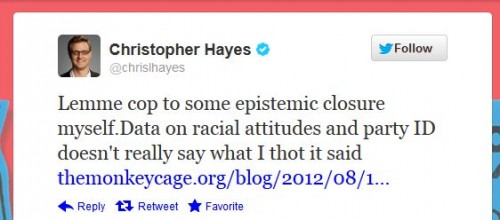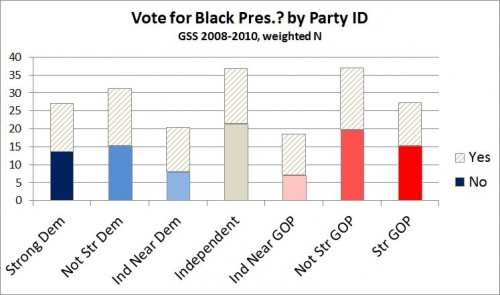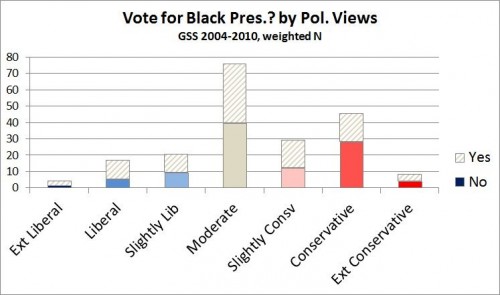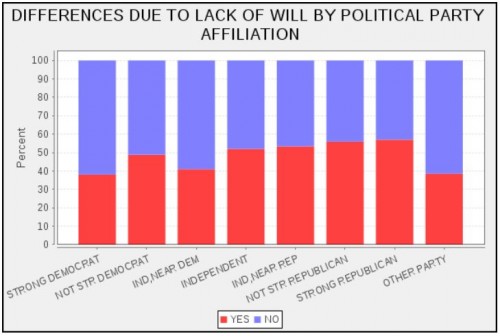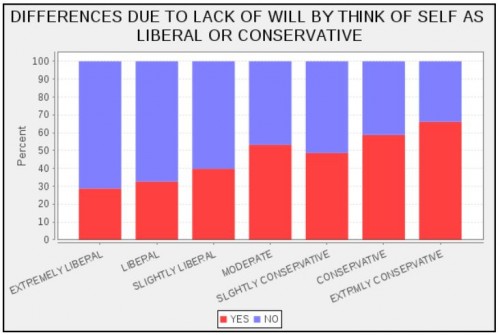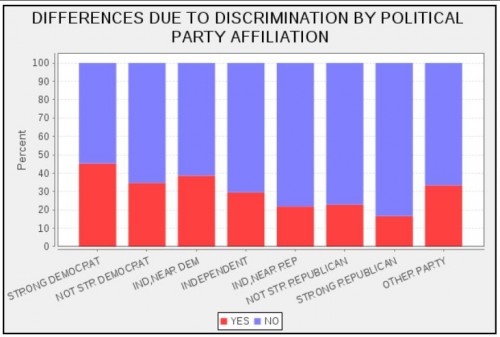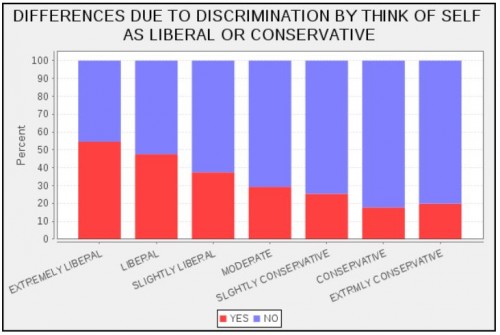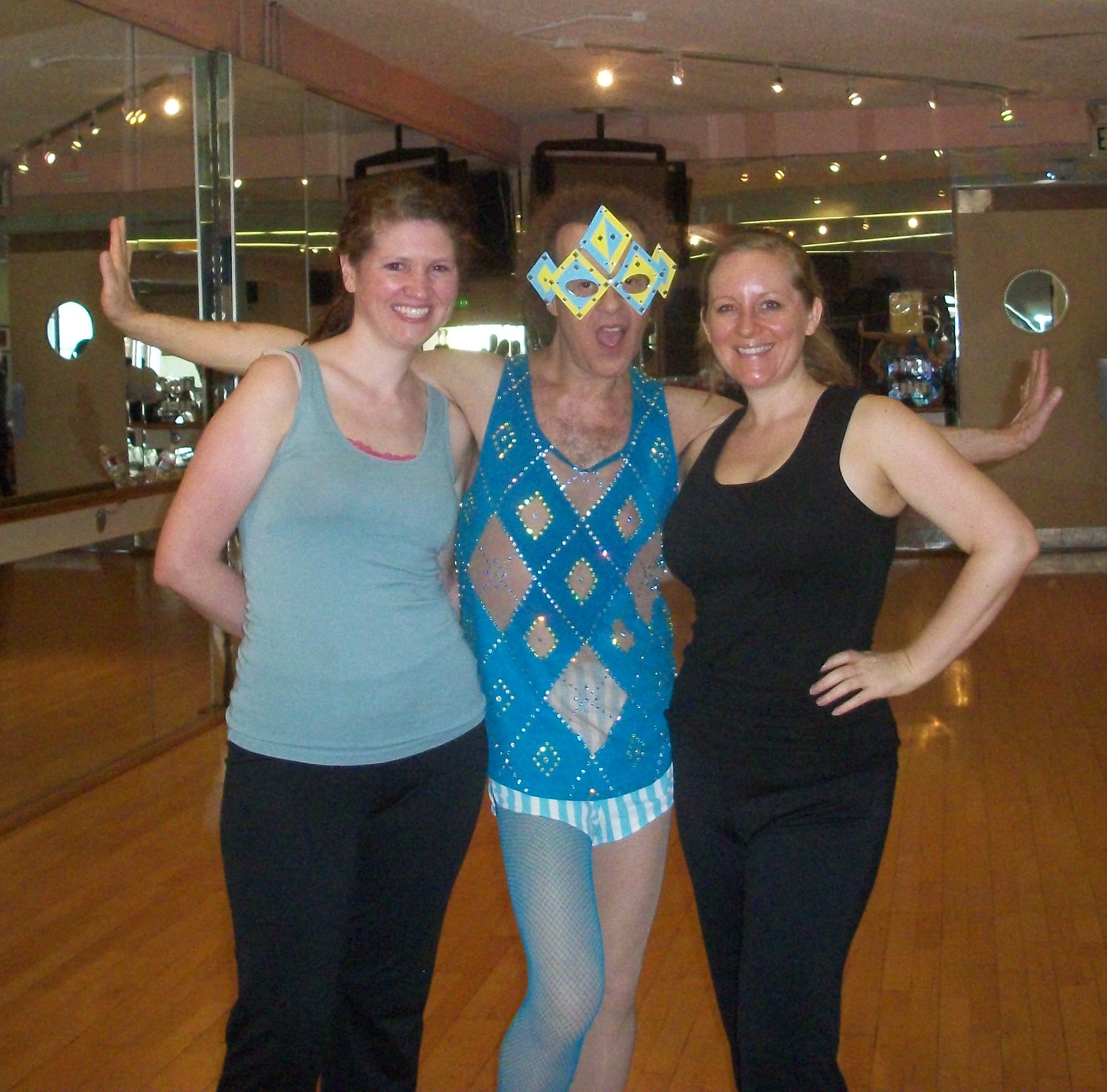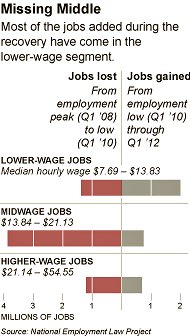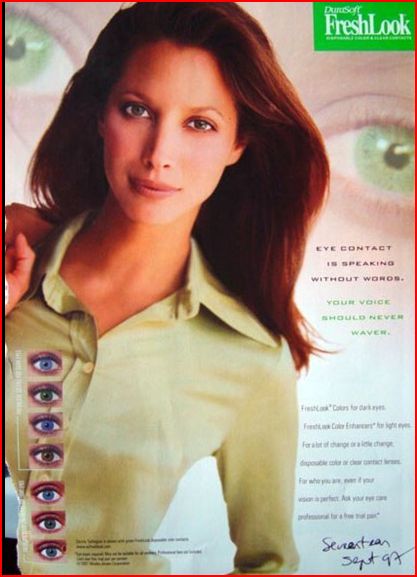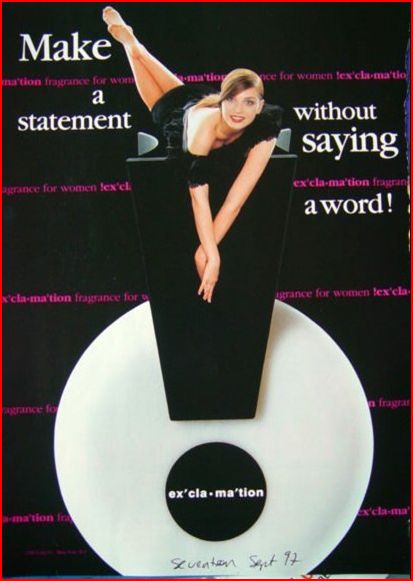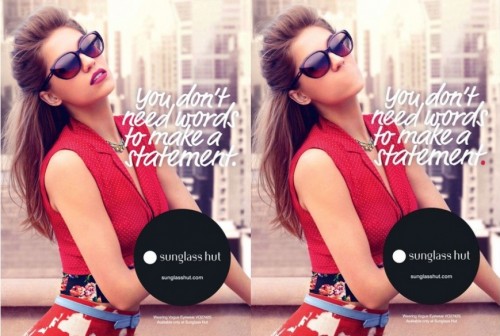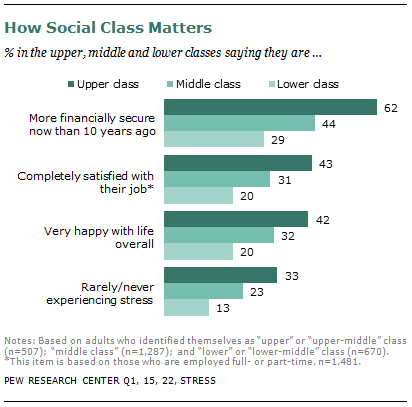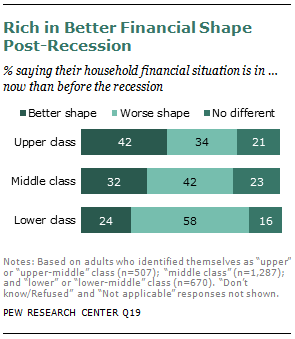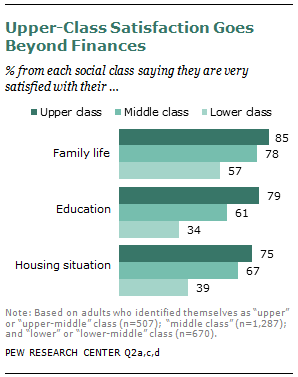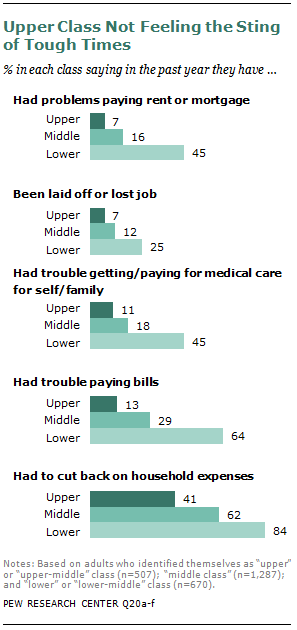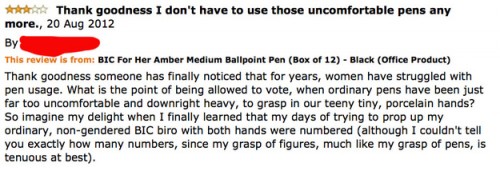Cross-posted at Montclair SocioBlog.
About two weeks ago, Chris Hayes said, “It is undeniably the case that racist Americans are almost entirely in one political coalition and not the other.”
The case, it turns out, is very deniable. Alex Tabarrok at Marginal Revolution denied it with data from the 2002 and 2008 General Social Survey (GSS). He looked at three questions…
- Favor laws against interracial marriage
- Would vote for a Black for president
- Blacks should not be pushy
…and concludes:
It is undeniable that some Americans are racist but racists split about evenly across the parties.
Hayes then tweeted a retraction.
End of story?
To begin with, the sample sizes Tabarrok uses are small. In the 2002 GSS, only 87 respondents went on record against interracial marriage, and in 2008, only 80 said they wouldn’t vote for a Black for president. (All the tables and graphs presented here and in Tabarrok’s post are based on Whites only.)
Only about 5% of the sample takes the racist response to these items. But I would run the table differently. Instead of asking what percent of each party is racist, I would ask where do those few racists go.
The differences are small, but the edge goes to the Republicans.
Second, there is a difference between party identification and political ideology. If you ask not about party but about political views, the differences become sharper.
The GSS has other questions that might stand as a proxy for racism. For example:
On the average (negroes/blacks/African-Americans) have worse jobs, income, and housing than white people. Do you think these differences are because most (negroes/blacks/African-Americans) just don’t have the motivation or willpower to pull themselves up out of poverty?
Again, the differences are small, with White Republicans slightly more likely (50% vs. 45%) to say Blacks’ economic problems are caused by lack of motivation and will power. And again, the differences are larger when the independent variable is political ideology rather than party identification.
In that same GSS question about the cause of Black economic troubles, another choice is:
Do you think these differences are mainly due to discrimination?
The differences for both Party ID and Political views are clear. White Democrats and liberals are much more likely to see discrimination as a major cause.
But is this racist? Not necessarily. It might well be part of a general view of the causes of human behavior, one that emphasizes personal factors (ability, motivation, etc.) and downplays structural forces the individual has little power over (discrimination). Conservatives might use that same explanation for unemployment and low income among Whites as well. But I do not know of any GSS questions about the causes of White economic problems. (Perhaps these exist, but I am not a GSS expert.)
We do know that racists (those who say they would not vote for a Black president) are more likely to take the conservative position on the “Willpower” explanation (76% vs. 50%) and on the Discrimination explanation (78% vs. 64%) compared with those who say yes, they would vote for a Black president. But that does not mean that the other conservatives who agree with them and who deny that racial discrimination affects the lives of Black people are also racists. People can come to the same position from different places. But people can also hide their racism behind seemingly non-racial issues. In the 1960s ,70s, and 80s, many observers thought that the Republicans were using first school busing and then crime as a proxy for race, as Republican strategist Lee Atwater famously explained. And some observers today (Tom Edsall, for example) argue that the Republicans are using welfare in the same way this time around.
Other bloggers have written about the questions Hayes raised — Tabarrok has links to three of these. The most interesting I’ve come across is Will Wilkinson’s (here). His original views apparently were individual-centered and much in line with Margaret Thatcher’s dictum that “there is no such thing as society.” But that was “when I was a Rand-toting libertarian lad.”
He has now come to see that individuals, with their ideas and attitudes and “non-coercive” behavior, can add up to something greater than the sum of its parts, i.e, society. But he got to this idea by walking down the left fork of the libertarian road – the road not to serfdom but to sociology.
Eventually I realised that actions that are individually non-coercive can add up to stable patterns of behaviour that are systematically or structurally coercive, depriving some individuals of their rightful liberty. In fact, rights-violating structures or patterns of behaviour are excellent examples of Hayekian spontaneous orders—of phenomena that are the product of human action, but not of human design.

